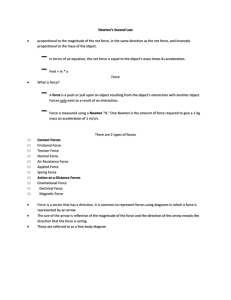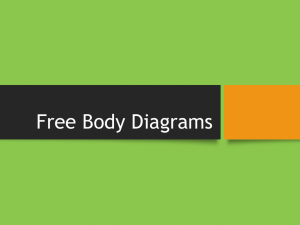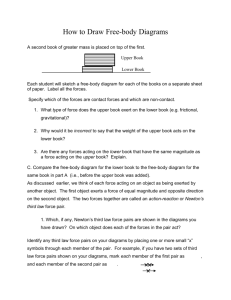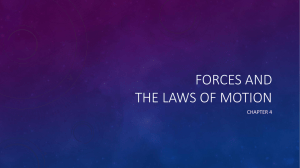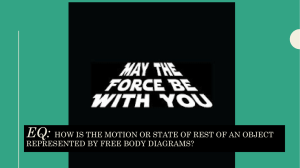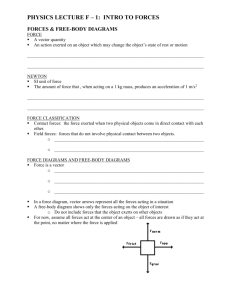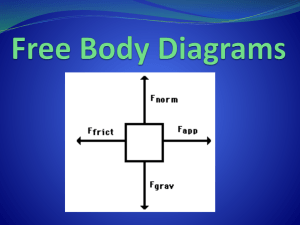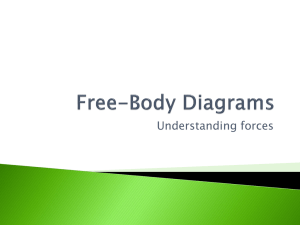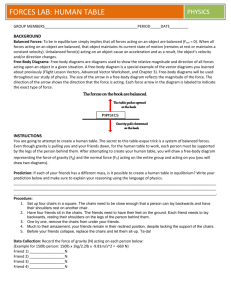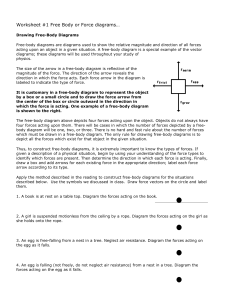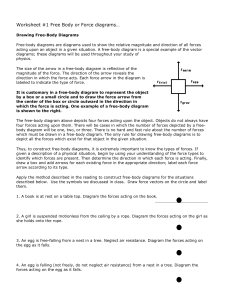Free Body Diagrams
advertisement
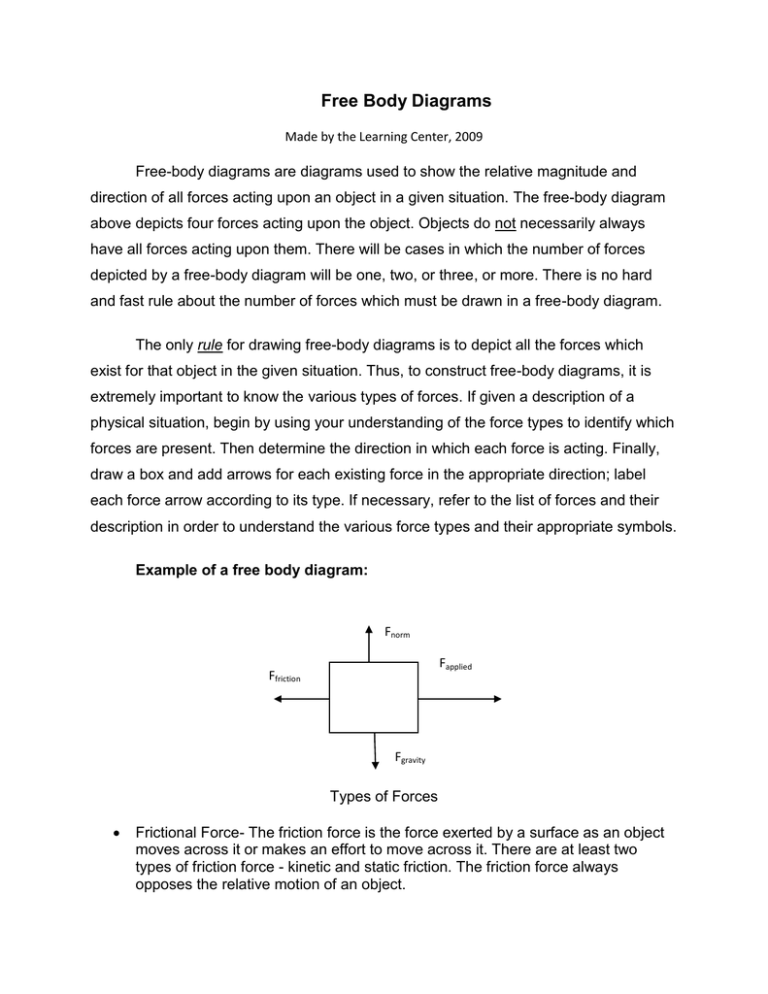
Free Body Diagrams Made by the Learning Center, 2009 Free-body diagrams are diagrams used to show the relative magnitude and direction of all forces acting upon an object in a given situation. The free-body diagram above depicts four forces acting upon the object. Objects do not necessarily always have all forces acting upon them. There will be cases in which the number of forces depicted by a free-body diagram will be one, two, or three, or more. There is no hard and fast rule about the number of forces which must be drawn in a free-body diagram. The only rule for drawing free-body diagrams is to depict all the forces which exist for that object in the given situation. Thus, to construct free-body diagrams, it is extremely important to know the various types of forces. If given a description of a physical situation, begin by using your understanding of the force types to identify which forces are present. Then determine the direction in which each force is acting. Finally, draw a box and add arrows for each existing force in the appropriate direction; label each force arrow according to its type. If necessary, refer to the list of forces and their description in order to understand the various force types and their appropriate symbols. Example of a free body diagram: Fnorm Fapplied Ffriction Fgravity Types of Forces Frictional Force- The friction force is the force exerted by a surface as an object moves across it or makes an effort to move across it. There are at least two types of friction force - kinetic and static friction. The friction force always opposes the relative motion of an object. Gravitational Force- The force of gravity is the force with which the earth, moon, or other massively large object attracts another object towards itself. By definition, this is the weight of the object. All objects upon earth experience a force of gravity which is directed "downward" towards the center of the earth. The force of gravity on earth is always equal to the weight of the object as found by the equation: Fgrav = m * g Normal Force- The normal force is the support force exerted upon an object which is in contact with another stable object. It will be perpendicular to the surface. Applied Force- An applied force is a force which is applied to an object by a person or another object. If a person is pushing a desk across the room, then there is an applied force acting upon the object. The applied force is the force exerted on the desk by the person. Tension Force- The tension force is the force which is transmitted through a string, rope, cable or wire when it is pulled tight by forces acting from opposite ends. The tension force is directed along the length of the wire and pulls equally on the objects on the opposite ends of the wire. Example Problems: 1. A book is at rest on a table top. Diagram the forces acting on the book. 2. A skydiver is descending with a constant velocity. Consider air resistance. Diagram the forces acting upon the skydiver 3. A car is coasting to the right and slowing down. Diagram the forces acting on the car. 4. A rightward force is applied to a book in order to move it across a desk at constant velocity. Consider frictional forces. Neglect air resistance. Diagram the forces acting on the book. Answers: #1 #2 #3 #4
